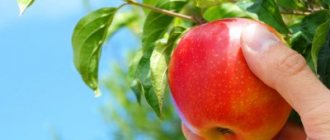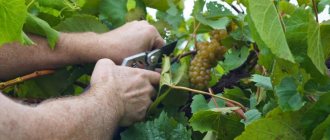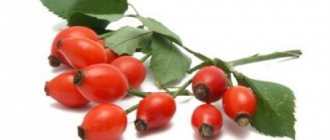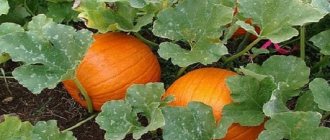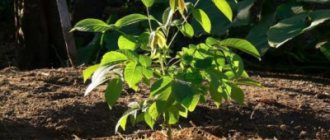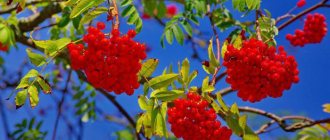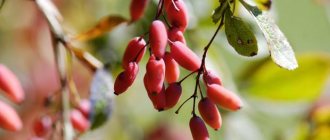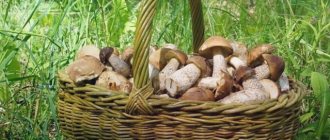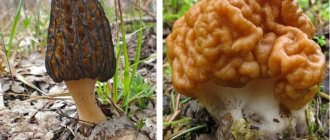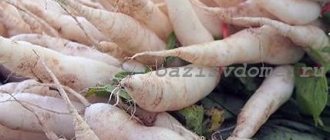Walnut is a healthy gift of nature
When to collect walnuts - fruits used in many cuisines around the world and rich in healthy vitamins, plenty of proteins and minerals?
Walnuts give strength to a vegetarian diet, are powerful antioxidants and increase potency; The green peel is rich in iodine and has an anti-inflammatory and healing effect. Ten pieces of walnut fruit per day is the recommended amount for an adult; a child can eat from 5 to 7 pieces.
How does a walnut grow and ripen?
Walnuts grow for a very long time and are long-lived. Therefore, at the age of 25–45 years, the seedling is considered young and is in the juvenile period. The peculiarity of the nut is that the quantity and quality of the harvest increases with age.
Walnut grows and develops well under optimal climatic conditions. Tolerates dry weather and not severe frosts. However, returning frosts are dangerous for the seedling. Spring sharp temperature changes are detrimental to vegetation. The main shoots and leaves are damaged, which later affects the yield. Over time, new branches form, but this takes a lot of time.
The period of fruit ripening on the tree is August – September, rarely – October. The exact harvest period depends on the region of growth and the variety planted.
There are several types:
- early;
- mid-early;
- late.
Each species has differences in the flowering period and final fruiting. For each region, the appropriate variety should be selected.
What does a walnut tree look like?
During the period of active development and growth, the walnut tree forms a wide trunk, reaching 30 m in height and 2 m in diameter. The color of the bark is grayish-white, the crown is dense and wide with a large number of branches. The root is powerful, goes deep into the ground by more than 7 m. The lateral root system is quite long - more than 10 m.
The alternate leaves are compound, imparipinnate. The length of the plate is 5–7 cm. A green mass with a peculiar aroma, during flowering it looks very attractive. The flowers are small, green, and collected in neat earrings. Flowering period: late April - early May, duration - 2 weeks. Late-ripening varieties may have buds that bloom again in mid-summer. Pollination occurs with the help of wind or pollen from nearby plants.
Walnuts grow on spreading trees, the crown diameter of which is about 20 m. The fruits are hard, brown in color, and have a four-lobed seed covered with a thin film. The peel is green in color, dense in structure, slightly wrinkled and lumpy.
How long does it take for a walnut to grow?
Walnut grows for a long time - the tree is long-lived. When planted in optimal climatic conditions, it can grow and bear fruit well for up to 600 years. Wild trees in forest areas can live for more than 1,200 years.
How long does a walnut grow before fruiting?
The period of full growth and development of the plant depends on the variety. On early ripening species, the first fruits appear 3–6 years after planting. Mid-ripening and late-ripening ones take at least 10 years to grow and develop before the first fruiting. From 10–12 years of life, a tree can produce from 1 to 5 kg of harvest per season. Mature trees that have reached 50–60 years of age bear fruit abundantly.
Attention! The older the tree, the higher the yield
How fast does a walnut grow?
Mid-season and late varieties grow for quite a long time and can often survive more than one host. Early ripening trees grow much faster, but such species require some care.
How many nuts does a walnut produce?
During the season, from one walnut tree you can get from 15 to 350 kg of quality harvest. This indicator may vary depending on the age of the tree, region of growth and quality of care. A seedling that is about 10 years old bears fruit little by little - a maximum of 5 kg of fruit per year.
Autumn is the time to harvest walnuts
When to collect walnuts? The ripening period for such valuable fruits is in autumn. It is this time that is rich in the harvest of various crops. By the way, the average lifespan of a walnut is 400 years. Depending on the variety, the fruits have different shapes: round, oval, ovoid, and are enclosed in a green pericarp, which gradually turns black and cracks as it ripens. The surface of the shell is often smooth, coarsely and finely wrinkled, sometimes bumpy and has numerous cells. Walnut is a heat-loving crop, requiring a lot of sun and high average annual temperatures.
Proper drying and sorting
The fruits collected from the walnut and fallen to the ground are sorted into three boxes. In the first, young nuts are placed in the pericarp. In the second, whole with intact shell. In the latter - damaged, suitable only for consumption.
Before storing for winter, complete drying is necessary. Walnuts are laid out in one layer on a sheet, placing the fruits under a canopy that protects them from moisture. Drying times may vary depending on the weather and precipitation. The drier and hotter it is, the faster the nuts will be ready for harvesting.
Signs of fruit ripeness
When can you collect walnuts? Often, the tree itself lets you know that the fruits are ripe and ready to eat. The plant generously shares its harvest, simply dumping it on the ground. By doing this, nature eliminates the need to collect nuts at a height which, by the way, can reach 35 meters. Therefore, everything is simple: you just have to bend down and collect nuts from the ground.
Many may wonder how and when is the best time to collect walnuts. The ripeness of fruits can be judged not only by the fact that they fall to the ground; split green shells are another sign of the ripeness of the fruit, which is best collected with gloves, because the secreted nut juice leaves persistent dark spots on the skin. If the green peel is not completely opened, you can use a small knife to help. There is another clever way to release the nuts; To do this, it is recommended to immerse them in water: the fruits will remain at the bottom, and the green peel will float up.
Common Signs of Maturity
Helpful advice! Walnuts can be collected before the peel cracks, when the fruits are overripe. The kernels ripen much earlier, but to make sure of this, it is recommended to pick several copies from the tree, split them, visually inspect the contents and taste them. A visual comparison will help you figure out whether the time has come to remove the fruits from the tree or not yet and it’s worth waiting.
The main and most common signs of maturity among summer residents:
1) One of the most obvious signs of readiness for harvesting is the cracking of the nut shell. The shell begins to burst, trying to release the ripe kernel out. The process occurs first on the lower branches, inclined to the ground, and only a few weeks later on the crown.
2) You can determine for sure whether it’s time to collect nuts or not yet by looking at the crown of the tree. By the time the kernels ripen, the foliage becomes dull, loses its bright green color, merging with the range of yellow-red autumn colors. If the gardener has doubts about the readiness of the fruit, you can wait until the first leaves begin to fall. The most important thing is not to wait until part of the crop falls along with the fall of the leaves and disappears under the autumn pillow, and the other part is carried away by birds.
3) Experienced summer residents can determine the end of the growing season by the beginning of flowering. The reference period begins with the formation of the first flower stalks. For example, if flowers appeared by the 20th of May, harvesting will be at the end of August - beginning of September. On average, a tree needs 90-110 days to complete the process of forming tasty and healthy nuts.
4) Early harvesting occurs only in the southern regions, namely: Krasnodar Territory (Kuban), the Crimean Peninsula and the Caucasus. In the central part and central zone of Russia, the Moscow region and the Moscow region, the Ryazan, Tula, Voronezh and Belgorod regions, the process does not deviate from the norm downwards. And in the Urals, Siberia and the Leningrad region, it is even delayed for almost a month.
5) Weather conditions play an important role in the full formation and ripening of kernels. If the summer is abnormally hot, the crop will ripen 14-20 days earlier. The same is true with the influence of cold temperatures - when the air drops 10-15 degrees below normal, the growing season will slow down by half a month.
6) The weight of each fruit also indicates readiness for harvesting. When fully ripened, when the kernels still remain sufficiently moist, the weight of each walnut increases, reaching the weight of two dry products.
Harvesting can be done not immediately, but gradually, collecting not only fallen fruits, but also fruits still preserved on the branches. This approach will allow you to avoid theft by birds, achieving maximum harvest weight.
Features of walnut harvesting
It seems clear how to determine the ripeness of fruits; all that remains is to find out when to collect walnuts. The period for their mass collection occurs in September-October; one tree can produce from 100 to 300 kilograms. Walnuts bloom in April-May and begin to bear fruit at 7-10 years of age; some varieties produce a harvest in the 3-4th year of planting. After harvesting, the nuts need to be spread in a thin layer and dried, turning occasionally. The yield of dry raw materials, which can be collected in a bag and stored for storage, will be approximately 25%. An attic is quite suitable as a room; In any case, the storage area must be dry and cool.
If there is an intention to preserve nuts for 2-3 years, then several manipulations should be carried out. The fruits need to be immersed in salted boiling water for 7-8 hours, dried and put in a bag. Severely dried out nuts can be “revived” by soaking them in salted water for 5-6 days. To obtain a good harvest, the walnut tree must be fed with organic fertilizers.
How to remove the pericarp (green peel)
Unfortunately, walnuts are not always freed from the pericarp during germination on the tree. More often, the green peel comes off the shell when it falls and touches the ground. A small percentage of fruits remain when the nuts have to be extracted manually, using a scalpel or knife. With its help, it will not be difficult to release the product ready for storage, keeping not only the kernel, but also the shell intact.
Important!
If the pericarp is not removed in time and left as is, the kernel will gradually begin to rot, spoiling the product from the inside. Gradually, the nut will darken, losing its taste and captivating aroma.
An alternative to a hammer will be special devices for peeling kernels. Removal machines can be found in dishware and hardware stores, which offer any utensils for cooking: frying pans, pots and other equipment.
To avoid getting your hands dirty from the plaque remaining from the pericarp, it is recommended to use rubber or household gloves that absorb the sticky juice. Upon completion of the separation of the fruits, you should soak the fruits in a saline solution for several hours until the shells lighten. Once the procedure is completed, the fruits are washed under running water and dried for 7-14 days under a canopy. The duration depends on the level of humidity and heat.
When to Harvest Walnuts in Their Milk Stage
Green walnuts are known for their beneficial properties. It is during this period that an unripe fruit with a not yet hardened kernel, which is in a gelatinous state, and a shell that is not formed into a strong shell, soft, juicy and easily cut with a knife, is most recommended for harvesting. When to harvest green walnuts to best benefit from their beneficial properties? On the eve of the Ivan Kupala holiday (July 7) is the most optimal time for the preparation of healthy raw materials.
The green nut should be easily pierced with a large needle, with abundant juice flowing out of the hole. The green fruits of the nut contain 50 times more vitamin C than oranges and 8 times more than black currants. When you can pick green walnuts is clear: it’s the beginning of July.
The collected raw materials must be washed, dried, cut into slices and placed in dry jars, sprinkled with sugar in a ratio of 1 to 2. Next, the glass containers must be covered with clean lids and placed in the refrigerator. As liquid appears, the latter must be drained and used throughout the year, adding to drinks, but no more than a tablespoon. This extract is an effective remedy for treating intestinal infections accompanied by diarrhea. Dosage for adults – 1 tbsp. spoon 3 times a day, children – a teaspoon.
Moscow region, central Russia where else you can plant and grow walnuts
Useful properties of walnuts
They are found in the European part from the foothills of the Caucasus to St. Petersburg, where the northernmost nuts in Russia grow. But these are isolated cases, exceptions that only confirm the rule.
These trees do not freeze out completely, but they also do not grow to their full potential.
The main factor determining the possibility of growing this southern tree is not the subzero winter temperature. The sum of average daily temperatures above 10 degrees is taken into account. It cannot be less than 190 C.
If in winter the temperature does not drop below -36 degrees and for 130-140 days a year the temperature is above 0 C, the walnut can grow and bear fruit.
Hybrids of Manchurian and walnut showed the best winter hardiness.
When planting even the best seed material brought from the south, adaptation to the cold climate does not occur - such trees regularly freeze and practically do not bear fruit.
Varieties from places with a humid, warm climate (west and south of Ukraine, the Black Sea coast of the Caucasus) are completely unsuitable for cultivation.
Only nuts from eastern Ukraine, the mountains of Central Asia or the Caucasus successfully adapt to the new conditions of central Russia.
Moreover, it is better to grow a nut from a seed yourself - an imported seedling (even from the indicated regions) will be significantly inferior in terms of endurance and adaptability to new conditions.
Walnut is found in the European part of Russia from the foothills of the Caucasus to St. Petersburg
Medicinal properties of walnut leaves
When to harvest walnuts? It is autumn that is the time of year that generously rewards with such useful and beloved fruits. It is worth knowing that the leaves of the walnut tree are also useful, decoctions of which are good for skin, gastrointestinal and female diseases. Bright green young leaves are selected as medicinal raw materials by pinching them off from the central petiole. It is recommended to collect in dry weather; the month of harvesting is June.
Drying must be done in the shade, under a canopy or in a ventilated area. Dried raw materials should be stored in a cool, dry place in paper bags. The smell of nut leaves drives away flies. It was precisely because of this feature that nuts were planted in places where important people were supposed to gather, discuss plans, and wait for a long time. In small doses, the smell of walnut leaves is pleasant for humans and largely causes headaches and sleep disturbances.
Collection and storage of nuts
The massive hazelnut harvest occurs at the end of August - September (after 08/29-Nut Spas). The maturity of a nut is determined by the yellowing (browning) of its wrapper and the shedding of nuts. The issue of harvesting is really serious. If you pick it too early, the fruits will be unripe. When you dry them, you get puny grains that have little fat, protein, carbohydrates, and the taste and quality are not the same. Since unripe nuts dry out quickly and are not stored for a long time. Delay in collecting - the nuts will begin to fall off, and you may lose more than half. The entire harvest will be carried away into winter caches by all sorts of rodents and birds.
As it matures, the biochemical composition of the kernel changes, the amount of water decreases sharply, and fats and proteins accumulate. The nutrient content of the nut kernel is greatly influenced by weather conditions. And nuts ripen at different times, and not only from bush to bush, but also within a branch. Some are already peeling and falling off, while others are still completely green. Therefore, you will have to approach each bush several times and take a closer look. As soon as the plush (the wrapper in which the nuts ripen) turns yellow and begins to turn brown, and the shell of the nuts turns light yellow or brownish, pick it. Along with a plus.
That is, the harvest is carried out shortly before biological ripeness, until the nut begins to crumble
It is important not to miss the moment of harvesting. The optimal time for harvesting is when the nuts begin to change color, and if, when shaking the bush, the first nuts begin to fall out of the nuts, it is time to harvest
(When the nut ripens, the edges of the pluses dry out, turn away and the nut falls out).
During the initial processing of collected fruits, the most difficult operation is separation from the wrapper. The wrapped nuts are stored in heaps where fermentation occurs, the tannins of the wrappers are oxidized, the oxidation products permeate the shell, giving it a brown color, and the seeds a pleasant nutty flavor. As a result of the fermentation processes that occur during this process, the nuts ripen - substances from the top pass into the kernel, which leads to an improvement in nutritional and taste qualities. In this case, the kernel acquires a specific taste and aroma. Shrinkage from freshly harvested 30%.
After cleaning and sorting, the nuts are stored in bags made of thick paper or fabric that allows air to pass through well. They cannot be stored for a long time in plastic bags that do not allow air to pass through, as they can suffocate and become moldy. Nuts must be completely dried; their moisture content should not exceed 12-14%. This can be achieved indoors, by drying the nuts for 1-2 weeks, spreading them in a thin layer.
Readiness for storage of hazelnuts is determined by sound. If, after scooping a handful and pouring them out, you hear a characteristic ringing sound, the nuts are ready. The fat content (nut oil) does not change significantly during storage, remaining at the level of 61-72%, but the amount of unsaturated acids gradually decreases, which leads to a deterioration in taste. Store nuts in a cool, dry room at a temperature of 3-12 °C for a year with a humidity of 12-14%, and at 0-3 °C for three to four years.
There is a special type - the so-called roasted nuts, when drying is carried out in the oven at a temperature of 110? C.
When harvesting, the soil under the plants becomes very compacted. Therefore, it is necessary to loosen it immediately. Additionally, water and feed with phosphorus and potassium (or wood ash). After all, hazelnuts will continue to grow until frost, in particular, continue to differentiate the buds (that is, their development into flower buds) and prepare for next year’s harvest.
Walnut leaf decoction
To prepare a healthy decoction, add 250 grams of dried leaves to a liter of hot water and boil in a water bath for 20 minutes, then cool, strain and add to the bath or use it as a lotion for skin diseases. An infusion of walnut leaves is an effective means of restorative action, recommended for loss of strength, irregular menstruation, gastroenteritis, and atherosclerosis. Often used in combination with other medicinal plants.
It is recommended for everyone to eat walnuts, especially for older people, because fatty oils that are not saturated with acids are useful for atherosclerosis. Walnuts are useful for people experiencing significant physical activity.
Benefits of walnut pericarp
The pericarp is collected after the fruit is harvested. They need to be cut in half and then dried in a warm room or in a dryer at a temperature of 30-40 degrees. The yield of dry raw materials is 20%. Dried leaves and pericarps, a decoction of which is characterized by anti-inflammatory and wound-healing effects, are successfully exported. They treat ulcers, boils, stomatitis, sore throat, frostbite. Pour a tablespoon of raw material into a glass of water, boil for a minute, leave for half an hour, strain and take a quarter glass before meals 3 times a day. An infusion of nut pericarps is recommended for use for menstrual irregularities, leucorrhoea and bleeding, especially uterine bleeding. To prepare, you need to pour half a liter of water into 5 tablespoons of raw materials, boil for a quarter of an hour, leave for about 30 minutes, strain and use as a wound healing agent.
Autumn is the time when picking walnuts is a very useful and exciting activity. In combination with physical activity, it is the key to maintaining health, because walnuts are a storehouse of useful microelements. The main thing is to timely examine it under your feet among the thick walnut foliage.
Storing walnuts with shells at home
Dried nuts need to be prepared for storage. Some people store them without removing them from the shell, while others leave only the kernels. There is no right way. You can do this and that. Experienced gardeners advise using different methods to distribute the harvest. Put some for long-term storage, leave some for food, etc.
INTERESTING. Walnuts last a very long time. At a temperature of about 10 degrees in a dry place, the fruits in the shell can last a year to a year and a half.
In bags
Storing nuts in a bag
The easiest way to store your harvest is to put everything in a bag. Just remember to sort through the nuts and remove any rotten or broken shells. At a temperature of 20 - 22 degrees, the shelf life in a bag is approximately six months. At temperatures up to 15 degrees – a year.
In salt
Sometimes the fruits are stored in salt. The advantage of this method is that the salt absorbs all the moisture, and the nuts themselves always remain dry.
To store this way, you will need a glass jar or clay jug. A mixture of salt and dry wood shavings is poured into the bottom (only salt can be used). Then lay the nuts and add the above mixture. Sprinkle a layer of salt on top and close with a lid.
Keep the jar or jug in the dark and cool.
In special boxes
You can use boxes and cardboard boxes. This method is convenient if you plan to use nuts in the near future for cooking or are preparing them for sale.
